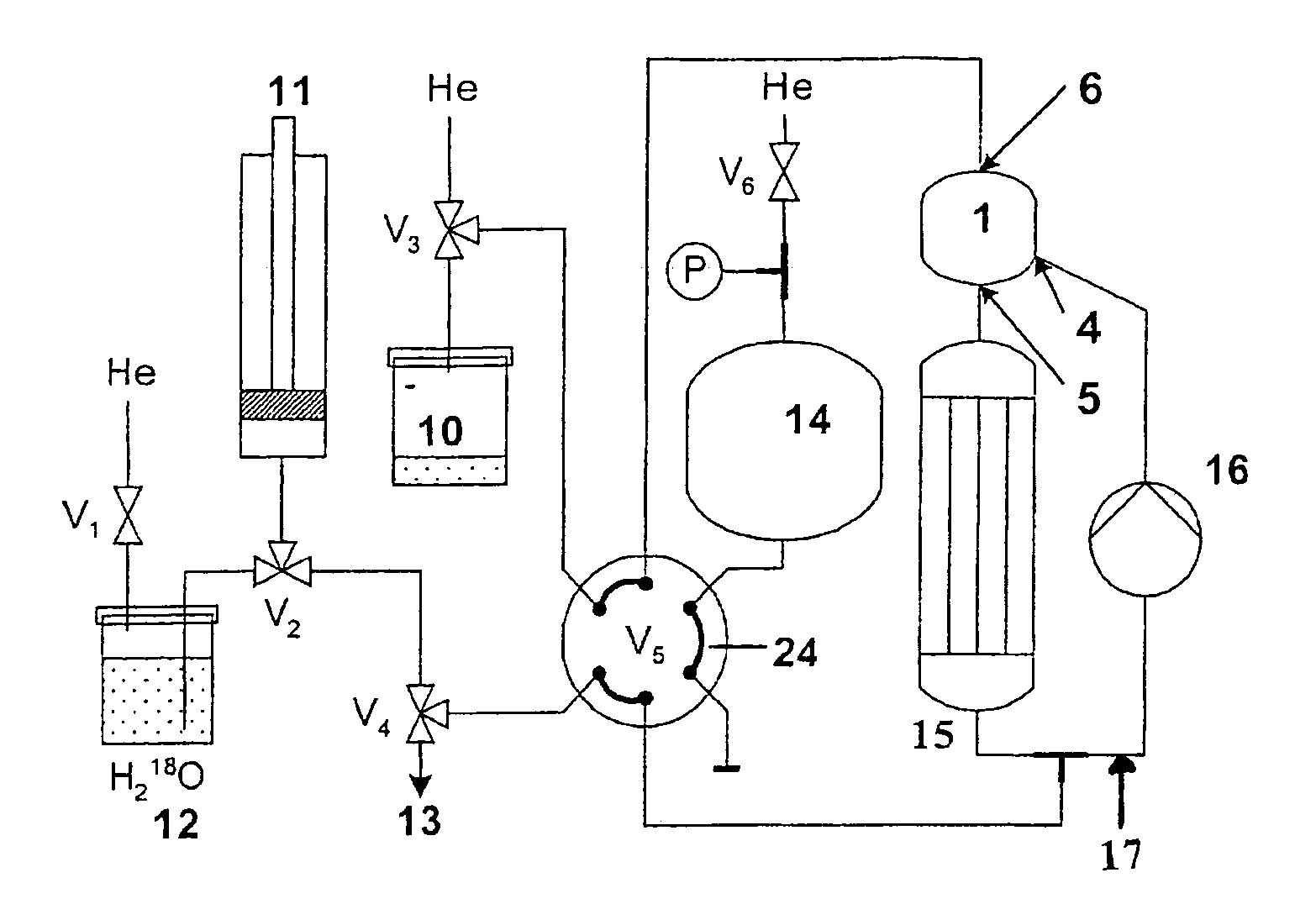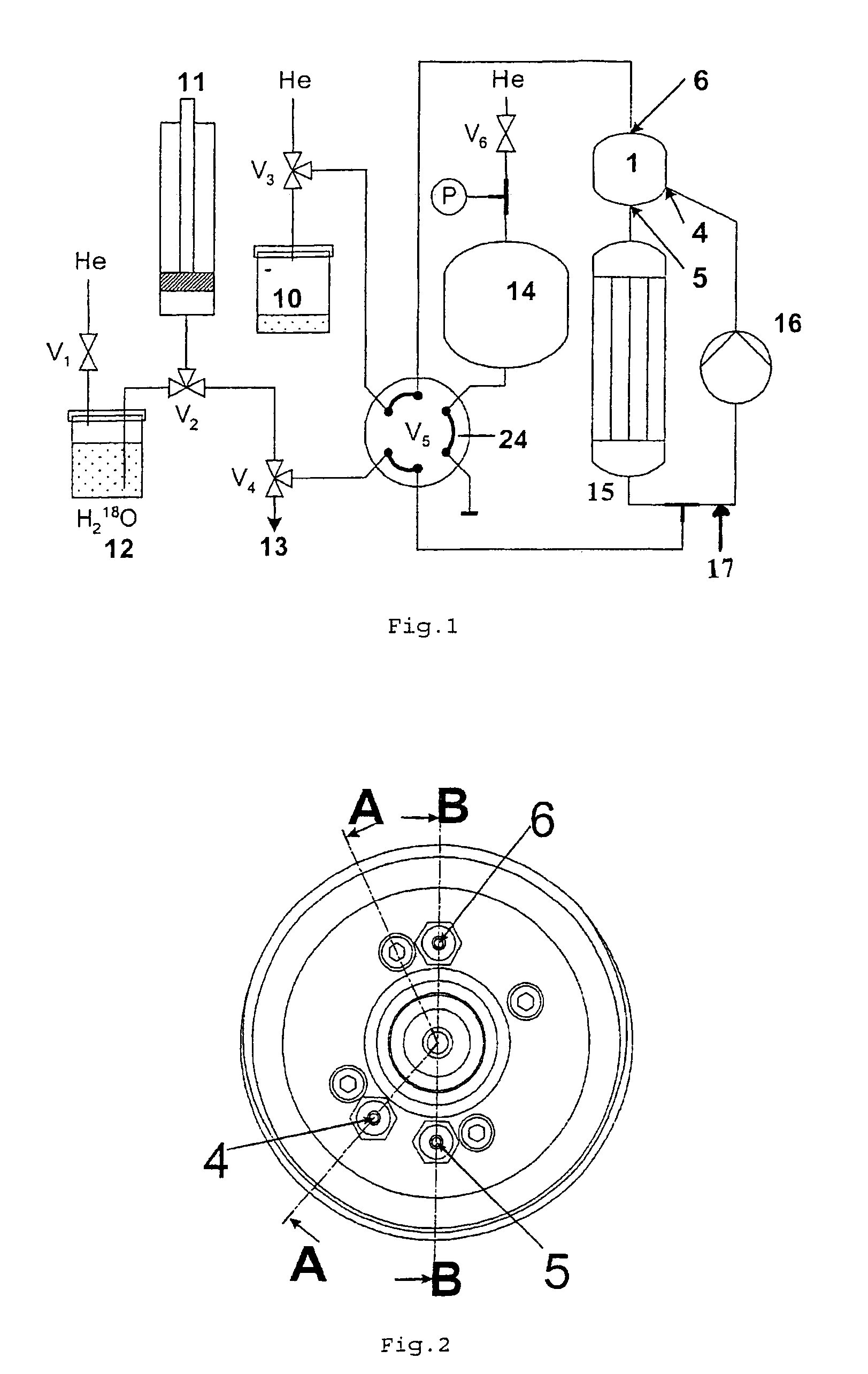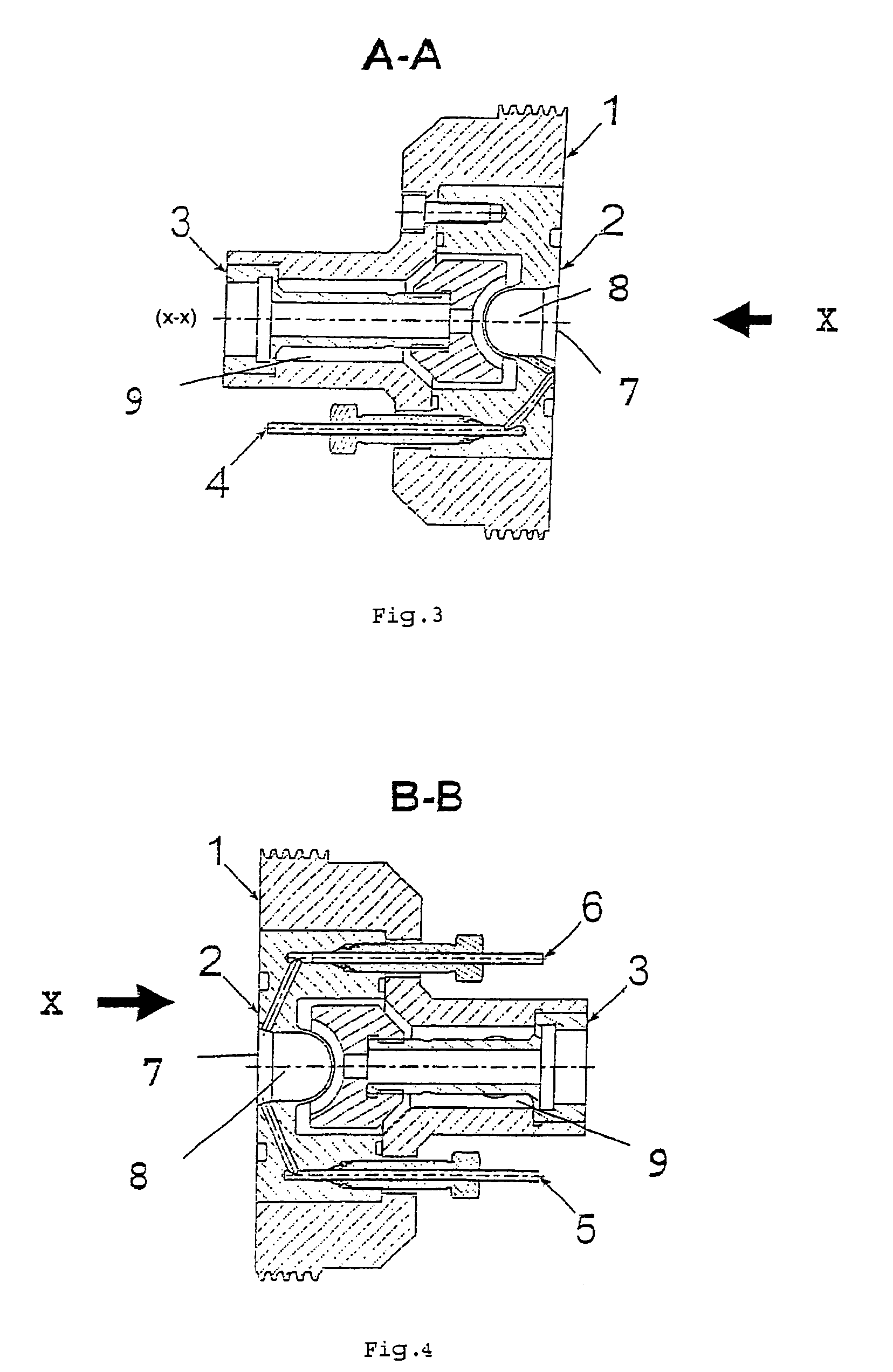Device and method for producing radioisotopes
a radioisotope and device technology, applied in the field of devices and methods for producing radioisotopes, can solve the problems of limited irradiation intensities for producing radioisotopes, power dissipation, and limitations in the intensity and/or energy of particle beams that are used,
- Summary
- Abstract
- Description
- Claims
- Application Information
AI Technical Summary
Benefits of technology
Problems solved by technology
Method used
Image
Examples
first embodiment
[0070]the irradiation cell 1 is disclosed in FIG. 2 to 4 and corresponds to the mechanical assembly which, during operation of said device, is subjected to an accelerated particle beam irradiation on the target material in order to produce the radioisotope of interest.
[0071]The irradiation cell 1, as represented in FIG. 2 to 4, comprises an insert 2 which consists in one or more metallic parts (elements) arranged so as to create a volume corresponding to an irradiation cavity 8.
[0072]The insert 2 therefore includes the cavity 8, this cavity has a configuration such that it can house the target material which is subjected to the bombardment of the accelerated particle beam. For this purpose, said cavity is closed (sealed) by an irradiation window 7 transparent to the accelerated particle beam.
[0073]The irradiation cell also comprises an inlet 4 and an outlet 5 allowing the target material to enter the irradiation cell and get out of it. The inlet and outlet provide the inflow and out...
second embodiment
[0079] detailed in FIG. 5 to 7, the inlet 4 is located approximately in the direction of the impact point of the accelerated particle beam X, i.e. said inlet 4 corresponds essentially to the central symmetry axis (x-x) of the irradiation cell 1, while the outlet ducts 5 and 6 are located at the edge (periphery) of said cell.
[0080]This embodiment allows to create a vortex inside said cavity, again essentially without stagnation areas. Furthermore, the fact that the inlet duct is located approximately facing the impact point of the beam allows a displacement tolerance of about 1 mm for said beam.
[0081]Moreover, in a particularly advantageous way, this second embodiment allows to give a symmetric circulation to the target material within said cavity 8. Similarly, the fact that the inlet duct 4 is facing the irradiation window in the opposite direction of the irradiation beam X allows to induce a cooling of said window and thus prevent an excessive heating of the window by the accelerat...
PUM
 Login to View More
Login to View More Abstract
Description
Claims
Application Information
 Login to View More
Login to View More - R&D
- Intellectual Property
- Life Sciences
- Materials
- Tech Scout
- Unparalleled Data Quality
- Higher Quality Content
- 60% Fewer Hallucinations
Browse by: Latest US Patents, China's latest patents, Technical Efficacy Thesaurus, Application Domain, Technology Topic, Popular Technical Reports.
© 2025 PatSnap. All rights reserved.Legal|Privacy policy|Modern Slavery Act Transparency Statement|Sitemap|About US| Contact US: help@patsnap.com



